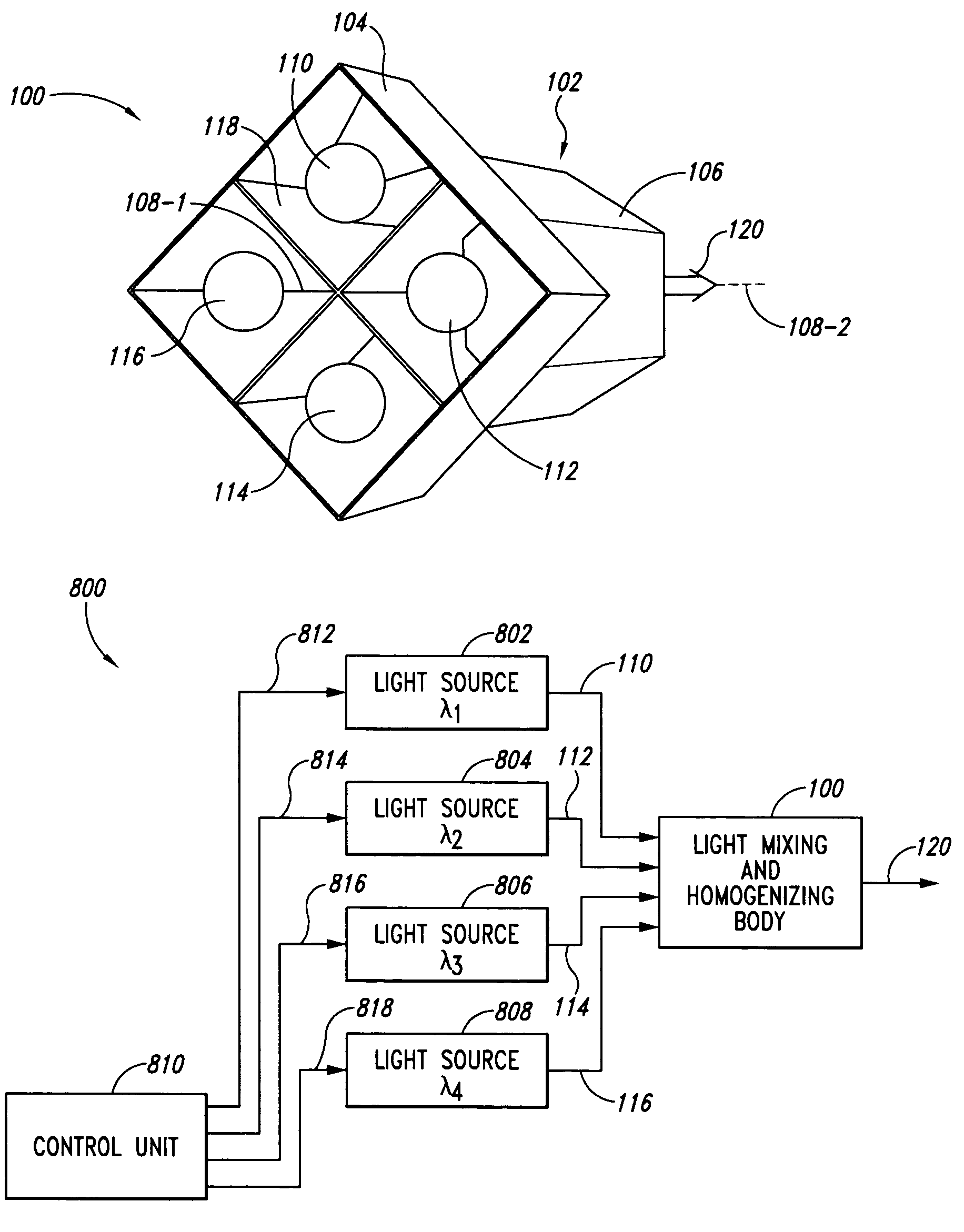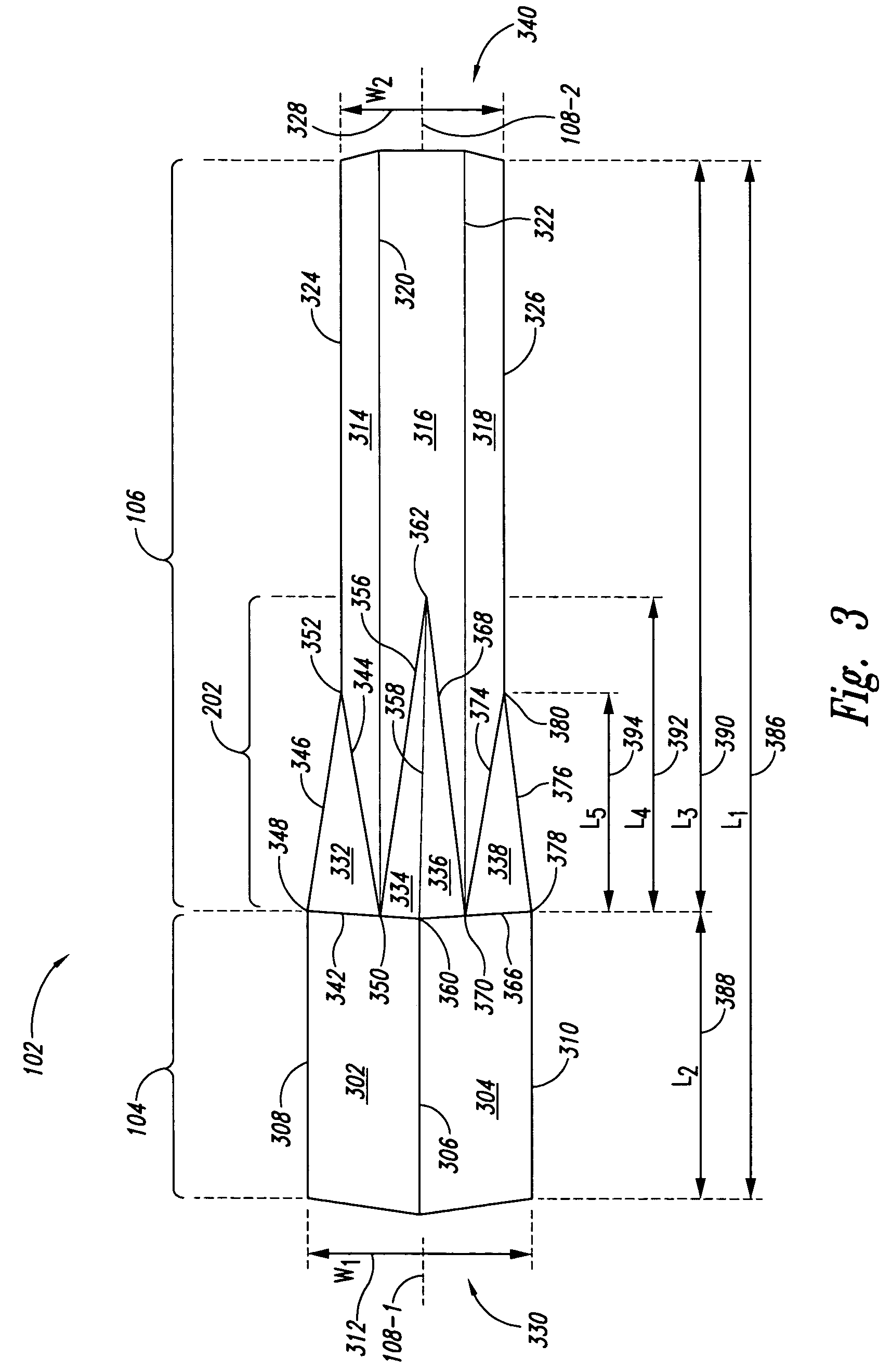Light mixing and homogenizing apparatus and method
a technology of light mixing and homogenizing apparatus, applied in the field of optical guides, can solve the problems of limiting the application of this useful technique, increasing the cost and weight of the optical system, and achieving the effect of eliminating alignment problems and manufacturing more economically
- Summary
- Abstract
- Description
- Claims
- Application Information
AI Technical Summary
Benefits of technology
Problems solved by technology
Method used
Image
Examples
Embodiment Construction
[0022]In reference to FIG. 1, an embodiment of a light mixing and homogenizing apparatus 100 includes a tubular body 102 having a first end portion or tubular member 104 with a square cross-section and a second end portion or tubular member 106 with a hexagonal cross-section. Both first end portion 104 and second end portion 106 are arranged about a central, longitudinal axis 108 so that the geometric cross-section for each end portion (104, 106) extends symmetrically in the direction of longitudinal axis 108 forming sides of the end portions.
[0023]In this disclosure, longitudinal axis 108 can include a central line passing symmetrically through the long or axial direction of tubular body 102 equidistant from each side member in first end portion 104 and second end portion 106. First end portion 104 can receive a plurality of incoming light beams (110, 112, 114, 116), each incoming light beam has a Gaussian distribution where the intensity at the center of the incoming beam is highe...
PUM
 Login to View More
Login to View More Abstract
Description
Claims
Application Information
 Login to View More
Login to View More - R&D
- Intellectual Property
- Life Sciences
- Materials
- Tech Scout
- Unparalleled Data Quality
- Higher Quality Content
- 60% Fewer Hallucinations
Browse by: Latest US Patents, China's latest patents, Technical Efficacy Thesaurus, Application Domain, Technology Topic, Popular Technical Reports.
© 2025 PatSnap. All rights reserved.Legal|Privacy policy|Modern Slavery Act Transparency Statement|Sitemap|About US| Contact US: help@patsnap.com



